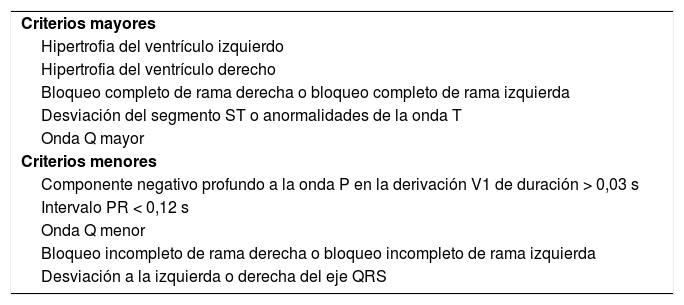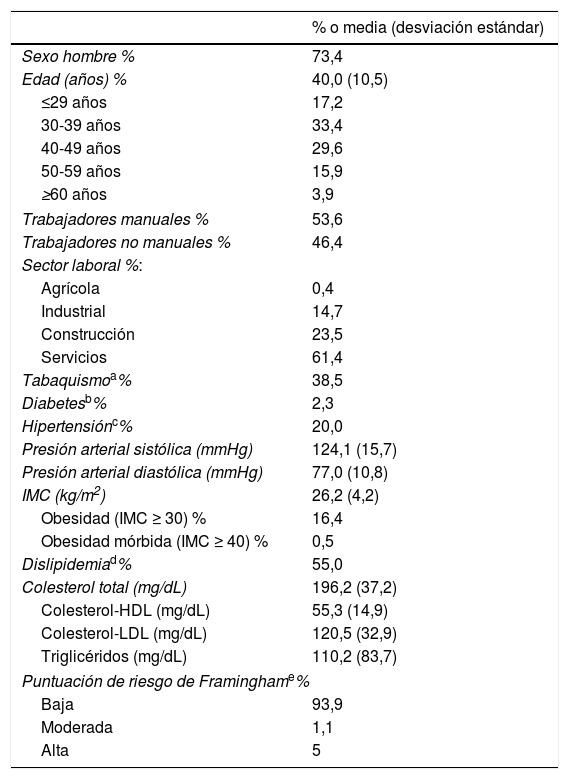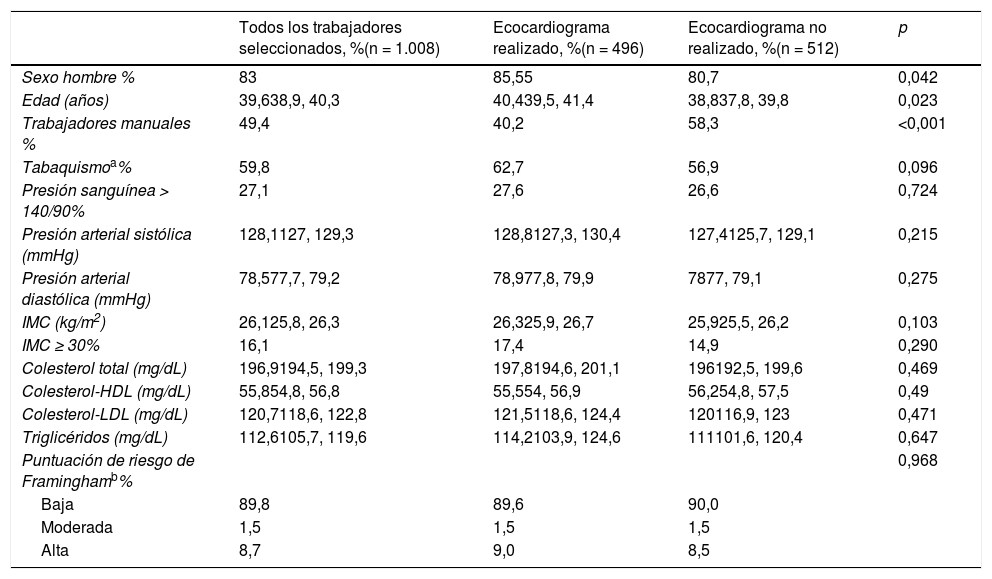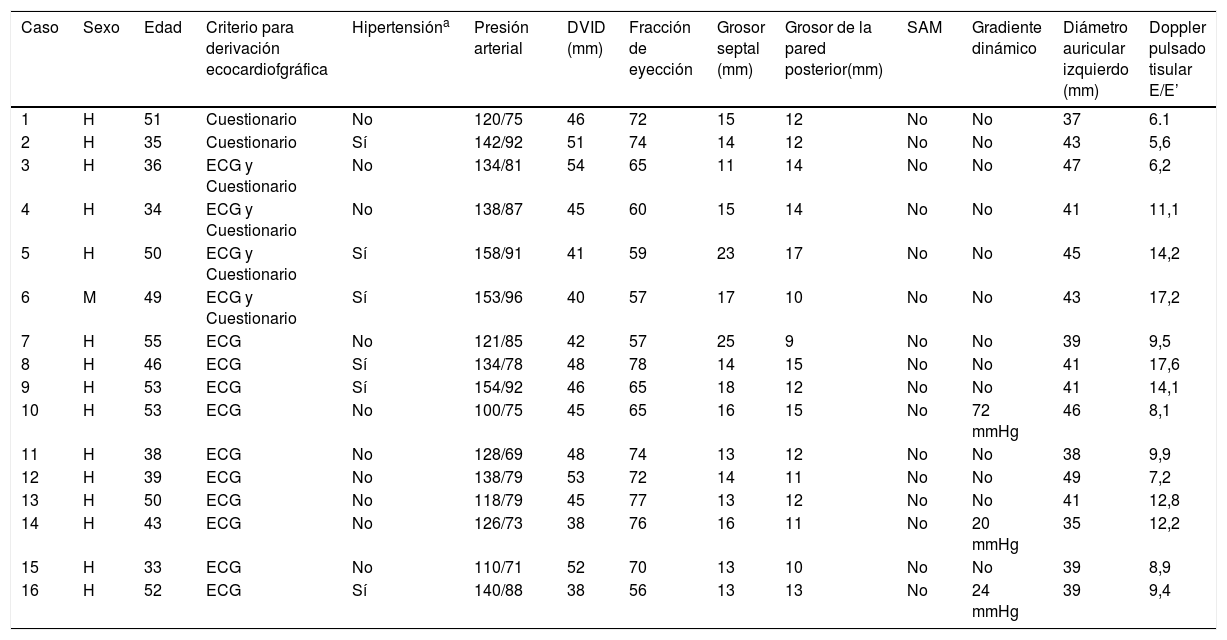En España no existen estudios que hayan evaluado la prevalencia de la miocardiopatía hipertrófica en la población general. El objetivo de este trabajo fue evaluar la prevalencia de la miocardiopatía hipertrófica en una muestra amplia de la población laboral española.
Materiales y métodosSe incluyó a 13.179 trabajadores (73% varones, con una edad media de 40 años) de 5 regiones españolas a los que, entre mayo de 2008 y noviembre de 2010, se les realizó un reconocimiento médico con un electrocardiograma. Se derivó a los trabajadores con alteraciones sugestivas en el electrocardiograma o con antecedentes médicos predisponentes (síncope de esfuerzo o muerte súbita en familiar menor de 50 años) para una evaluación ecocardiográfica. Se definió miocardiopatía hipertrófica a la presencia de un grosor parietal igual o mayor a 13mm en cualquier segmento del ventrículo izquierdo. Se estimó la prevalencia de la miocardiopatía hipertrófica en toda la muestra y en los trabajadores no hipertensos.
ResultadosSe seleccionó a 1.008 trabajadores para el ecocardiograma, aunque solo 496 (49,2% de los seleccionados) acudieron a la prueba. Tras el ecocardiograma se detectaron 16 casos de miocardiopatía hipertrófica y se estimó una prevalencia del 0,24% en el total de la muestra. En el subgrupo de trabajadores no hipertensos se objetivaron 10 casos de miocardiopatía hipertrófica, que se corresponden con una prevalencia estimada del 0,19%.
ConclusionesEn nuestra muestra de la población laboral española la prevalencia estimada de miocardiopatía hipertrófica fue del 0,24%. En el subgrupo de pacientes no hipertensos la prevalencia estimada fue del 0,19%.
To date, in Spain, there are no studies that have evaluated the prevalence of hypertrophic cardiomyopathy in the general population. The aim of this study was to assess the prevalence of hypertrophic cardiomyopathy in a large sample of the working population of Spain.
Materials and methodsThe study included 13,179 workers (73% men; mean age, 40 years) from 5 regions of Spain who, between May 2008 and November 2010, had a medical examination with an electrocardiogram. The workers with suggestive abnormalities in the electrocardiogram or a predisposing medical history (exertional syncope or sudden death of a family member younger than 50 years) were referred for an echocardiographic evaluation. We defined hypertrophic cardiomyopathy as a parietal thickness ≥13mm in any segment of the left ventricle. We estimated the prevalence of hypertrophic cardiomyopathy in the entire sample and in the workers without hypertension.
ResultsA total of 1008 workers were selected for the echocardiogram, although only 496 (49.2% of those selected) of these attended the appointment. After the echocardiogram, we detected 16 cases of hypertrophic cardiomyopathy, estimating a prevalence of 0.24% for the entire sample. In the subgroup of workers with no hypertension, we observed 10 cases of hypertrophic cardiomyopathy, which corresponds to an estimated prevalence of 0.19%.
ConclusionsIn our sample of the working population in Spain, the estimated prevalence of hypertrophic cardiomyopathy was 0.24%. In the subgroup of patients with no hypertension, the estimated prevalence was 0.19%.
Artículo
Diríjase desde aquí a la web de la >>>FESEMI<<< e inicie sesión mediante el formulario que se encuentra en la barra superior, pulsando sobre el candado.

Una vez autentificado, en la misma web de FESEMI, en el menú superior, elija la opción deseada.

>>>FESEMI<<<












